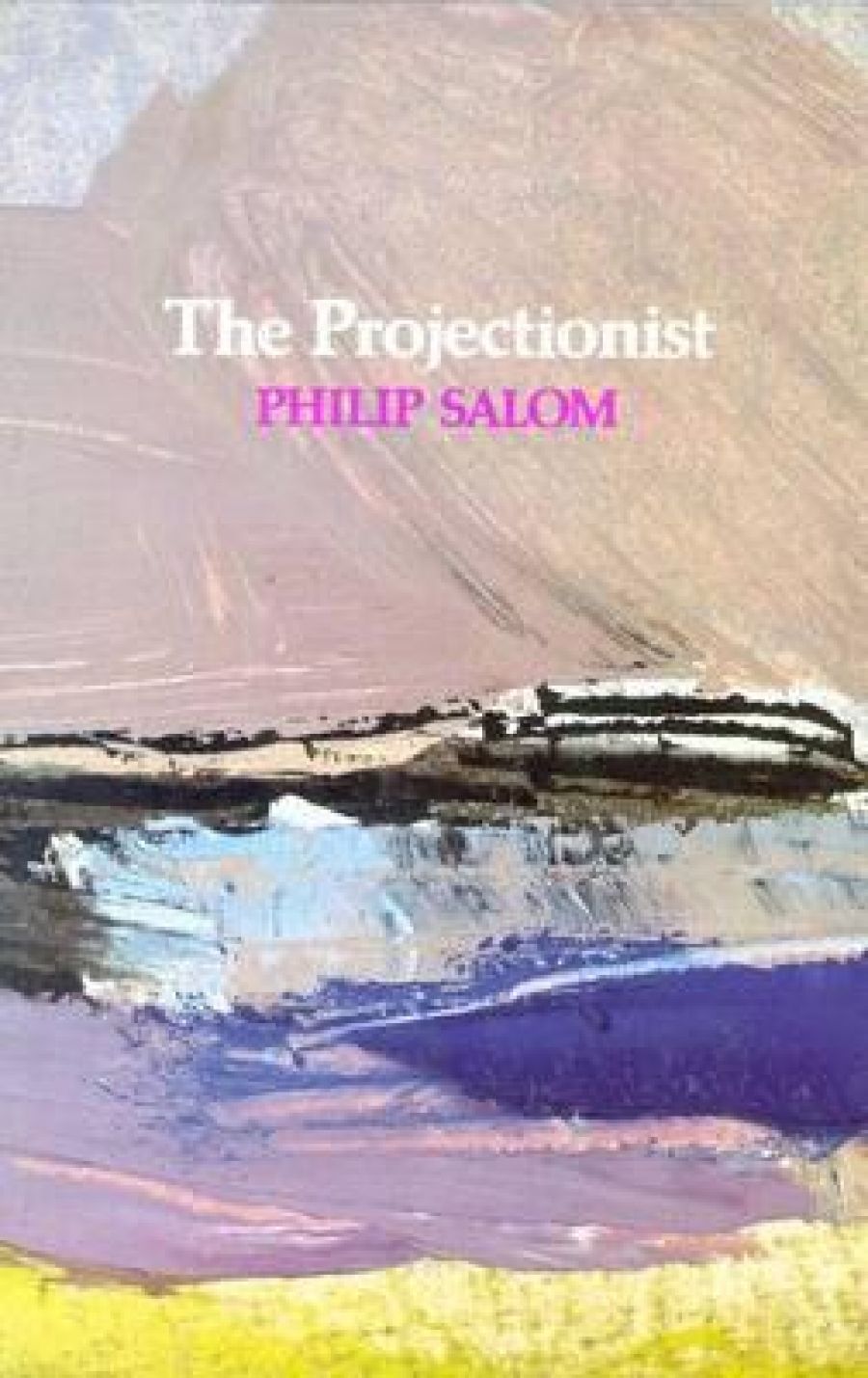
- Free Article: No
- Contents Category: Poetry
- Review Article: Yes
- Online Only: No
- Custom Highlight Text:
The Fremantle Arts Centre Press is an example of what a state-oriented press can do. Under intelligent guidance and with sympathetic but not irresponsible state funding assistance, it has now established a solid reputation for publishing goodlooking and worthwhile books. If west coast writers are now better known in the east than they were several years ago, this is only partly due to their qualities as writers, good though some of them undoubtedly are. It is also because the Fremantle Arts Centre Press has actively encouraged and promoted west coast writers, giving them the confidence that only professional book publication can.
- Book 1 Title: The Projectionist
- Book 1 Biblio: Fremantle Arts Centre Press, 88 pp, $7.50 pb
Philip Salom is another writer whose work is adding to the press’s, as well as his own, reputation. The Silent Piano, his first book of poems (at 93 pages, something more than a ‘slim’ volume) won the Commonwealth Poetry Prize for a first book in 1981. It was a rich and rewarding collection of poems, showing a fine respect for the craft of poetry as well as a clear sense of place. This has now been followed by The Projectionist, subtitled ‘a sequence’.
The Projectionist is divided into two sections, and it is easier to discern sequence in the first part than in the second, or in the two parts taken together. The first part is loosely oriented around the figures of the poet’s apparent landlord and landlady for a time, and their two sons. Mr Benchley, retired cinema projectionist and mute, potters in his workshop. His wife, a hunchback, is something of an earth-mother, her gathered-up skirt laden with fruit. The two sons seem headed for a life of crime.
The poetry in no way attempts to tell their story. Rather, it makes a series of intermittent forays into their significance: as human beings with a past, as images of memory, as examples of simple yet enduring human values. If they are not sentimentalised, it is because of the ironic comment on them embodied in their crude offspring. It is also because, although central to this part of the book, the Benchleys do not dominate it. They take their place within a wider poetic exploration of questions which they themselves have probably never been conscious of.
It is this wider exploration, I assume, which is continued in the book’s second part. The Benchleys occur in several poems here too, but as something of an afterthought. One gets the impression that these are poems which Salom could not fit into the pattern of Part I, but felt were too good to throw a way. But their appearances do little to continue this sense of sequence.
The strength of The Projectionist can be seen in a passage such as this from ‘Mrs Benchley’:
Of her, sound comes first, deceptive:
neat tinkling, the thin steel
bell at her goats neck
But then the cursing, chiding
words gusting on the
wind. She lurches against the hill
twisted, stumbling shape,
the goats chain
wrapped in her fist like a spine
crumbled in the womb:
hunchback.
The effect is cinematic: the empty landscape, then sound, then the distant shape becoming more clearly defined, a figure and finally, in the poem as a whole, a meaning, a significance:
Unsweet imagery that angers
and attracts me: the deformity
of her goodness.
The dangers of Salom’s poetry lie in a stripped-down syntax and a minimalised referentiality which cannot sustain such careful control of focus. I cannot grasp, for example, what is meant in a poem significantly called ‘Know’, by ‘I have known / at one then, self not be.’ This frequent planning of syntax down to where it is seen only by the knots that remain serves, unfortunately, to render most themes equal. The result is, strangely, that the poems which are more ‘personal’ have Jess substance, offer less for a reader to grasp, then those about the mute projectionist and his family.
Yet Part 2 contains many fine poems, too: ‘Portrait with Nets’, ‘The Railway Line’, ‘Sea-Wall’, ‘Dream’, and ‘Poet’ are only a few. My overall opinion is that the temptation to structure the whole volume as a sequence is not successful, and has led to the inclusion of a few poems whose exclusion would have given The Projectionist more of that firm grasp of perceptual process which is the strength of its best poems. It is, nonetheless, a real consolidation of Philip Salom’s impressive talent.


Comments powered by CComment